Handstand Progression – 12-Week Program | The Complete Guide
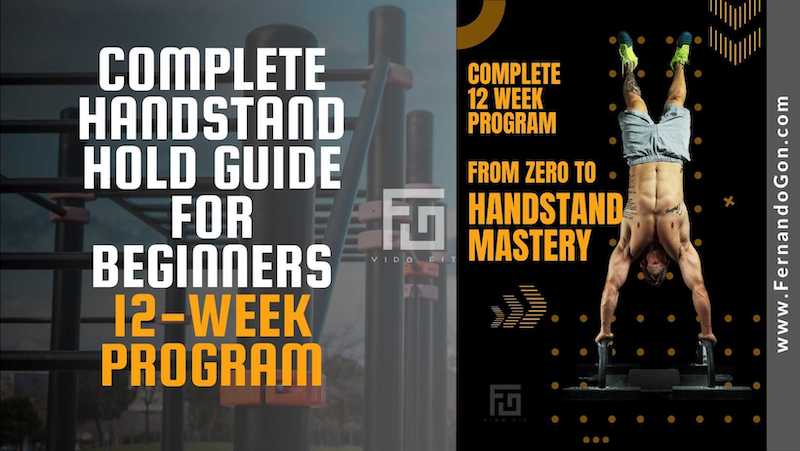
Are you ready to start practicing the handstand hold but need a structured program to follow?
Don’t worry, I partnered with a Calisthenics professional with tons of experience, and we designed the perfect handstand program for beginners.
If this sounds like you and you are ready to dedicate yourself to a 12-week program, then you are in the right place.
Have you ever dreamed of effortlessly holding a handstand, impressing friends, and boosting your fitness? The handstand is not just a party trick; it’s a symbol of strength, balance, and control.
Imagine mastering the art of handstands through a step-by-step progression tailored for beginners. This Handstand Mastery Program is designed to take you from zero to handstand hero.
Picture yourself executing a perfect handstand, feeling a rush of achievement. With our program, that vision can become a reality.
Ready to turn your world upside down? Dive into our Complete Handstand Guide for Beginners and start your journey toward handstand mastery today.
Table of Contents
▶️ Handstand Progression For Beginners – Mastery Program
Starting your handstand journey can be both exciting and challenging.
I’ve been there, and I understand the mix of emotions you’re feeling.
Remember, every expert was once a beginner, just like you.
Embrace the process and celebrate each small victory along the way.
Your dedication and patience will pay off, transforming what once seemed impossible into a display of your strength and perseverance.
Keep pushing, stay consistent, and trust your ability to conquer this challenge.
Your handstand mastery is not just about physical strength; it’s a testament to your inner resilience.
✅ Handstand Benefits
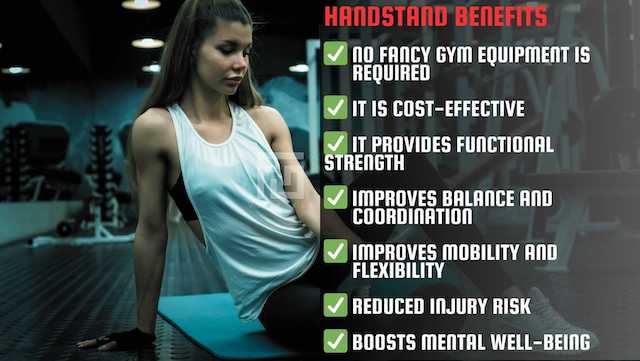
- ℹ️ Accessibility: It doesn’t require expensive equipment or gym memberships, making it accessible to everyone, everywhere.
- ℹ️ Versatility: exercises can be modified to suit any fitness level, from beginners to advanced athletes.
- ℹ️ Functional Strength: It builds strength applicable in real-world situations, enhancing your ability to perform daily tasks and improving your overall quality of life.
- ℹ️ Body Control: improves balance, agility, and coordination by teaching you to master your body weight.
- ℹ️ Aesthetic Benefits: Regular practice can help build a lean, toned physique by developing balanced muscle growth and reducing body fat.
- ℹ️ Mental Health: Like all forms of exercise, calisthenics can reduce stress, anxiety, and depression, improving overall mental well-being.
Related Read: Benefits Of Calisthenics | Why It Is Great And Why You Should Do It?
▶️ Understanding the Handstand Basics
Before you start practicing handstands, it’s important to familiarize yourself with the proper body position.
- Your wrists should be stacked directly under your shoulders
- Your hips should be stacked over your shoulders.
This position will help you maintain balance and control throughout the handstand.
To get comfortable with this position, try practicing against a wall. Stand facing the wall with your hands on the ground, then walk your feet up the wall until your body is in a straight line. This will help you get used to the feeling of being upside down and build up your shoulder strength.
▶️ Why Should You Follow A Workout Plan?
I found that following a workout plan is beneficial for me for the following reasons:
- ℹ️ Structured Progress: A well-designed plan has given me gradual progression in skills, strength, and muscle mass.
- ℹ️ Goal Achievement: It has helped me stay focused and track my progress.
- ℹ️ Variety: Workout plans incorporate various exercises, preventing me from getting bored.
- ℹ️ Efficiency: My workout plans are normally optimized for time and effort, ensuring that I get the most out of each session without wasting time on ineffective workouts.
- ℹ️ Motivation: Having a clear plan improves my motivation, as I have a set routine.
▶️ The Program EXPLAINED!!!
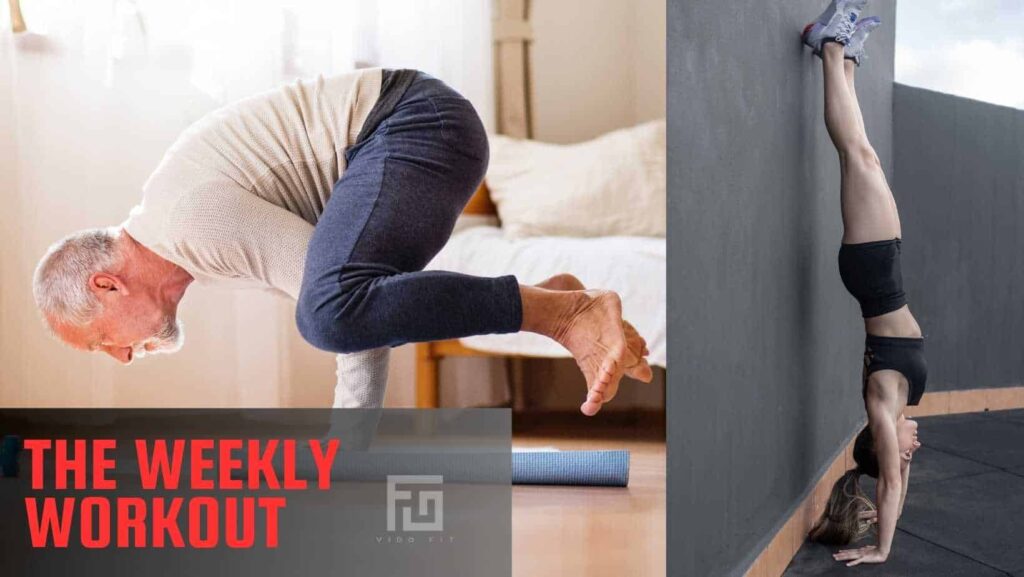
Don’t be intimidated by this program. It has been carefully designed for beginners!
✅ Training Days
You will do a workout on Monday, Tuesday, Thursday, and Friday
Monday – Balance Focus
Exercises Include:
- Frogstands
- Back to wall Handstand Dismounts
- Advance frog stands (included from week 7)
Tuesday – Overhead Mobility Focus
Exercises Include:
- Overhead shoulder stretch
- Forearms slides
- Overhead arms rise
- Child pose to cobra pose
Thursday – Kick ups and exits Focus
Exercises Include:
- Back to wall Handstand Kick Ups
- Chest to wall Handstand Exits
- Free Handstand Exits (included from week 7)
Friday – Upper body strength FocusExercises Include:
- Pike Push Ups
- Back to wall Handstand Holds
- Push-ups + isometric hold at last rep
- Elevated pike push-ups
- Chest-to-wall handstand holds
- CTW walks
✅ Non-Training Days – Active Recovery
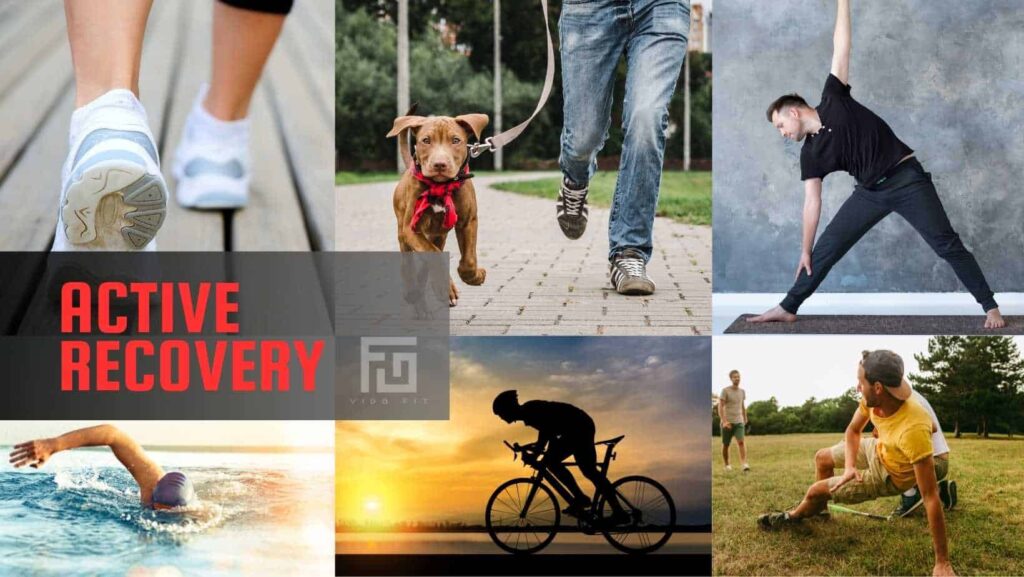
The other days (Tuesday, Thursday, and the weekends) are days OFF bodyweight exercises and are days of active recovery.
The idea of A rest day is to keep yourself active but also to recover from the previous day’s workout.
Active recovery includes activities like:
- Walking or light jogging
- Easy biking or cycling
- Swimming
- Restorative yoga
- Tai chi
- Active stretching
- Dance class
- Live Action Role-Playing (LARP)
- Playground games
- Running up and downhill
- Interval training
- Sprinting:
- Long walks
- Foam rolling
- Light cardio
- Gentle Pilate
- Leisurely sports
✅ Deloads
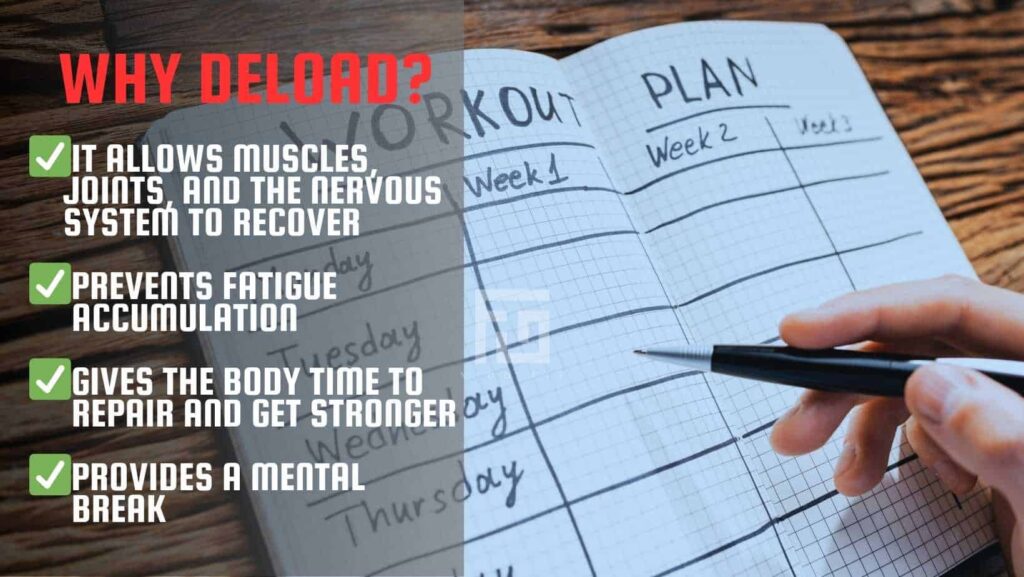
Week 7 is a deload week.
The benefits of incorporating deload into a training program are:
- Recovery: Deload periods allow muscles, joints, and the nervous system to recover from intense training, reducing the risk of overtraining and injuries. In simple terms, If you are not injured, you can continue exercising to achieve that sculpted mid-section you always dreamed of!
- Performance: By preventing fatigue accumulation, deloads can help maintain and even improve performance levels in subsequent training phases.
- Adaptation: These periods support physiological adaptations by giving the body time to repair and strengthen, leading to better long-term progress.
- Mental Break: Deloads provide a mental break from continuous intense training, helping to prevent burnout and maintain motivation.
- Assessment: They offer an opportunity to assess progress, adjust goals, and refine techniques without the pressure of intense workouts.
▶️ Building Shoulder Mobility and Strength
One of the most important aspects of handstands is shoulder mobility and strength. To build up these skills, try incorporating shoulder conditioning exercises into your practice routine.
Some exercises that can help improve shoulder mobility and strength include:
- Shoulder dislocates: Hold a stick or resistance band with both hands and slowly raise it over your head and behind your back, then back to the starting position.
- Pike push-ups: Start in a downward dog position with your hands and feet on the ground, then lower your head towards the ground and push back up.
- Wall angels: Stand with your back against a wall and slowly raise your arms overhead, then back down to your sides.
Incorporating these exercises into your practice routine can help you build the strength and mobility you need to progress in your handstand practice.
For additional tips and to improve your handstand progression, read the article Handstand Tips: Why Strength Isn’t Everything
▶️ Perfecting Your Form
The handstand position requires a lot of balance and strength, so it’s important to make sure your form is correct. Here are some form cues to keep in mind:
- Start in a plank position with your hands shoulder-width apart and your feet together.
- Slowly walk your feet towards your hands, keeping your arms straight.
- Once your feet are close to your hands, kick up with your legs and engage your core to hold yourself upside down.
- Keep your head neutral and your gaze forward, and make sure your shoulders are stacked over your wrists.
- Point your toes and keep your legs straight to maintain a straight line from your wrists to your toes.
▶️ Progressing to Freestanding Handstands
Once you’ve mastered the basic handstand position, you can start working on freestanding handstands. Here are some drills to help you progress:
- Wall handstands: Start in a handstand position with your feet against a wall. Slowly walk your hands away from the wall until you can hold a freestanding handstand.
- Handstand holds: Kick up into a handstand position and try to hold it for as long as possible. Start with short holds and work your way up to longer holds.
- Handstand push-ups: Start in a handstand position and lower yourself into a push-up, then push back up into a handstand position.
Remember, it’s important to take your time and practice regularly to improve your handstand skills. Don’t rush the progression, and make sure you’re comfortable upside down before moving on to more advanced drills.
▶️ Wrapping up

Wrapping up, we’ve journeyed through the essentials of mastering the handstand, starting with the basics and building up to more advanced techniques.
Remember, the key to success is patience and consistency. It’s not about rapid gains but steady progress.
Our program, designed for beginners, walks you through each step with structured training days focused on balance, mobility, kick-ups, exits, and upper body strength.
Don’t forget the importance of active recovery on your off days. Engaging in light activities such as walking, swimming, or even yoga can enhance your progress and prevent burnout.
Incorporate shoulder mobility and strength exercises into your routine to ensure you’re building the necessary foundation for a solid handstand. As you get more comfortable, start challenging yourself with freestanding handstands, moving away from the wall and into the center of the room.
So, take it one step at a time, trust the process, and before you know it, you’ll be impressing everyone with your handstand skills.
Let’s turn that dream into a reality and start your handstand journey today!
